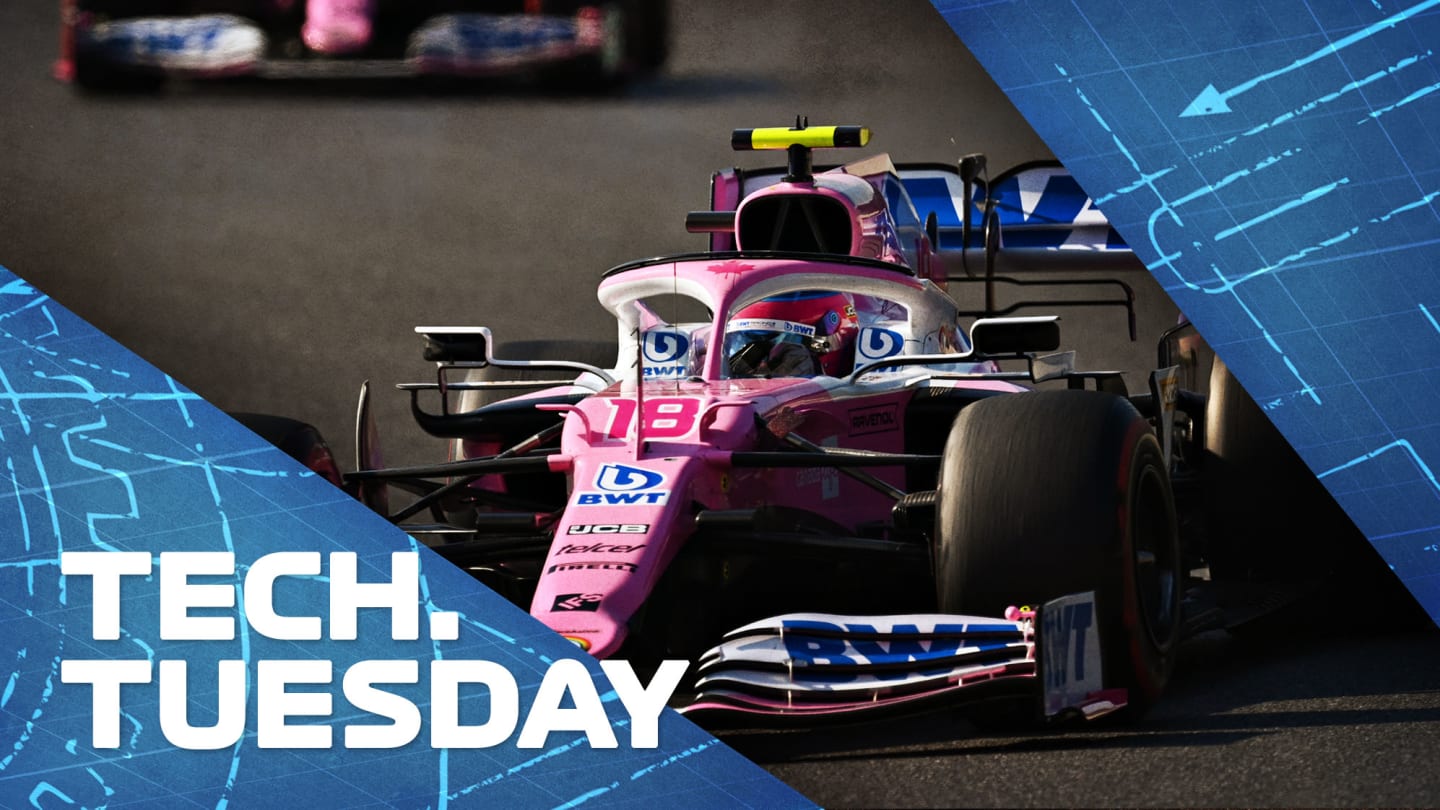
Technical
The Mugello updates that show Racing Point's RP20 is moving away from its Mercedes W10 inspiration

Share

The Racing Point RP20 proved to be the most controversial car of the 2020 season given its similarity to last year's Mercedes – and the stewards' ruling on its brake ducts in particular – but as Mark Hughes explains in this week's Tech Tuesday, the Silverstone-based team are now moving away from the W10's philosophy as they further develop their car...
The heavily-updated Racing Point RP20 used by Lance Stroll throughout the Tuscan Grand Prix weekend marked a significant departure from the car’s Mercedes W10 inspiration. The update comprised totally reshaped sidepods, new front brake ducts, a new rear wing endplate and minor tweaks to the profile of the front wing elements.
However, although the developments are moving the car away from last year’s W10, there are certain elements which take clear inspiration from the current Mercedes W11.
There were only enough parts for one car in Mugello but the second car will get the full package by the next race, in Sochi. Stroll’s performance throughout the weekend strongly suggested that the upgrade was an effective one as he was regularly quicker than team mate Sergio Perez in the standard car – though Perez did manage to edge out Stroll in qualifying after the latter was thwarted in making his second Q3 run by yellows for Esteban Ocon’s spin.
WATCH: Stroll frustrated after yellow flag ends Tuscan GP qualifying

The two Racing Point cars were running different parts at Mugello
The RP20’s original ducts were identical to those it purchased from Mercedes last year and which were used on later versions of the 2019 Racing Point. Although brake ducts were moved from listed to non-listed parts for 2020, it has been established that because they were on the Racing Point last year those ducts were already in the team’s DNA.
They have now moved on and are developing the car in exactly the way they created it – by taking a close look at other cars, notably the Mercedes, and simulating how such parts perform, then building them if the tunnel and CFD [computational fluid dynamics] confirm them as positive.
READ MORE: Racing Point withdraw appeal against stewards' verdict on RP20 brake ducts
The new ducts are not identical to those of this year’s Mercedes, but their evolution from the W10/RP20 ducts is in much the same direction as Mercedes made when creating the W11.
They are lower and flatter than the previous ducts, with a straighter top section where it extends out from the brake ‘cake tin’ – the drum-shaped carbon fibre component enclosing the disc and allowing the air from the duct inlets to be channelled in an aerodynamically favourable way.
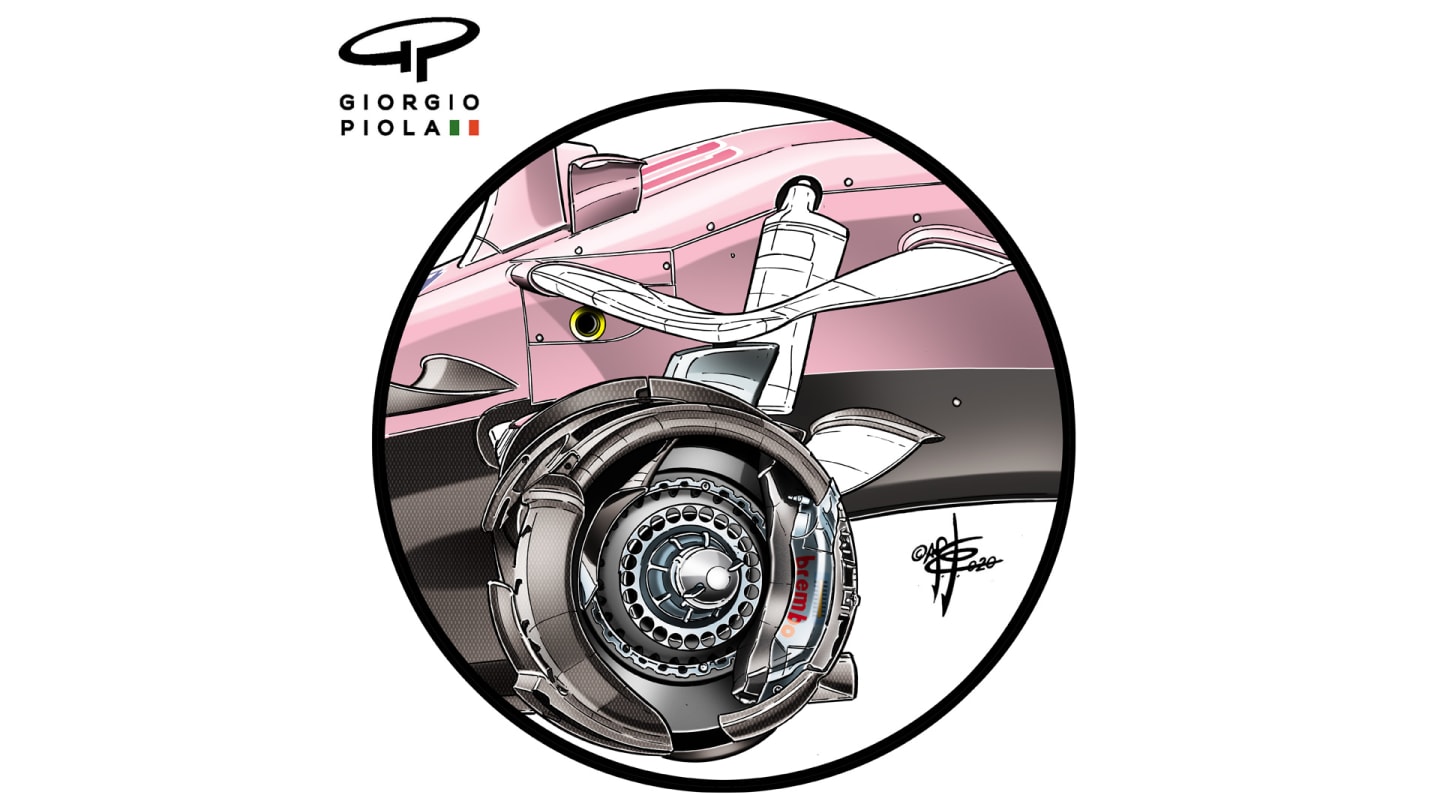
Sergio Perez had to run the old-style brake drum - as seen here - in Mugello, but both cars should have the new design for the next race at Sochi
This change will be all about boosting that aerodynamic effect, as the air rushing through there and out through the wheel rims comes out to meet the airflow that has just been out-washed around the tyre.
The blown wheels can be used in this way to enhance the energy of that flow as it moves down the length of the car, preventing it from being sucked in by the lower air pressure beneath the floor and thereby reducing the effectiveness of the underfloor.
The flow that has come from inboard of the tyres and through the barge boards, making its way down the body surfaces, has to negotiate the big obstruction of the sidepods.
On the W10 and original RP20 these were shaped with the minimum width at the front and a beautifully elegant in-sweep for the coke bottle section behind. This coke bottle section reduces the air pressure, inducing the airflow to rush into it, thereby accelerating the speed of the flow and the downforce it creates as it gets to the rear of the car.
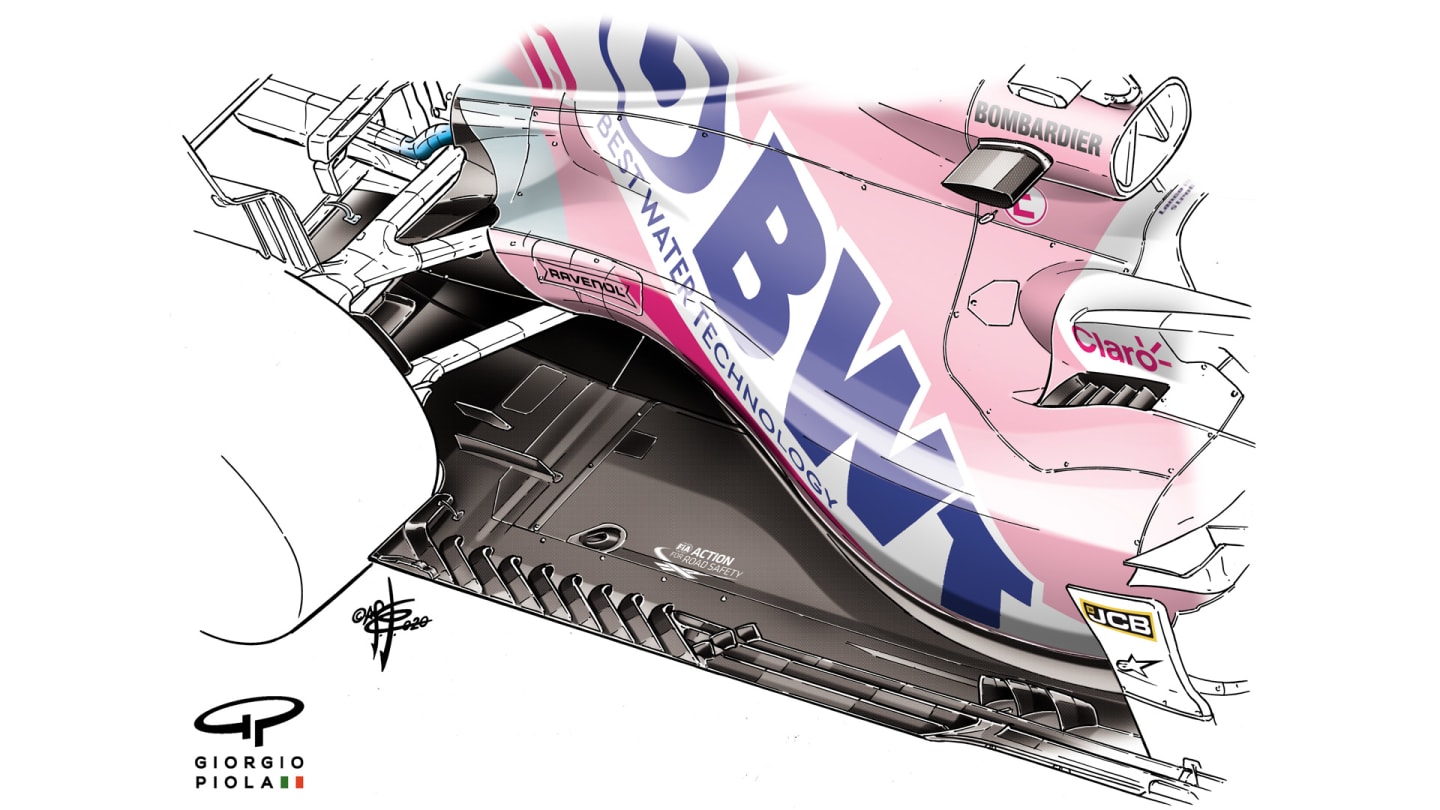
The original sidepod on the RP20
But there is always a compromise in this forward section of the sidepods, as they invariably initially slow the flow just by virtue of their obstruction as the air finds its way around them. The Racing Point’s new sidepods are bulkier at the front in order to create a downward ramp on the top.
TECH TALK: A closer look at the updates on the cars in Mugello - including a McLaren nose change
That ramp will accelerate the flow from above. At the bottom of the ramp it meets with the flow coming around the sidepods and accelerates it. It was a feature first used by Red Bull and Sauber a few years ago and was incorporated into the W11. Now it has been incorporated into the RP20 too.
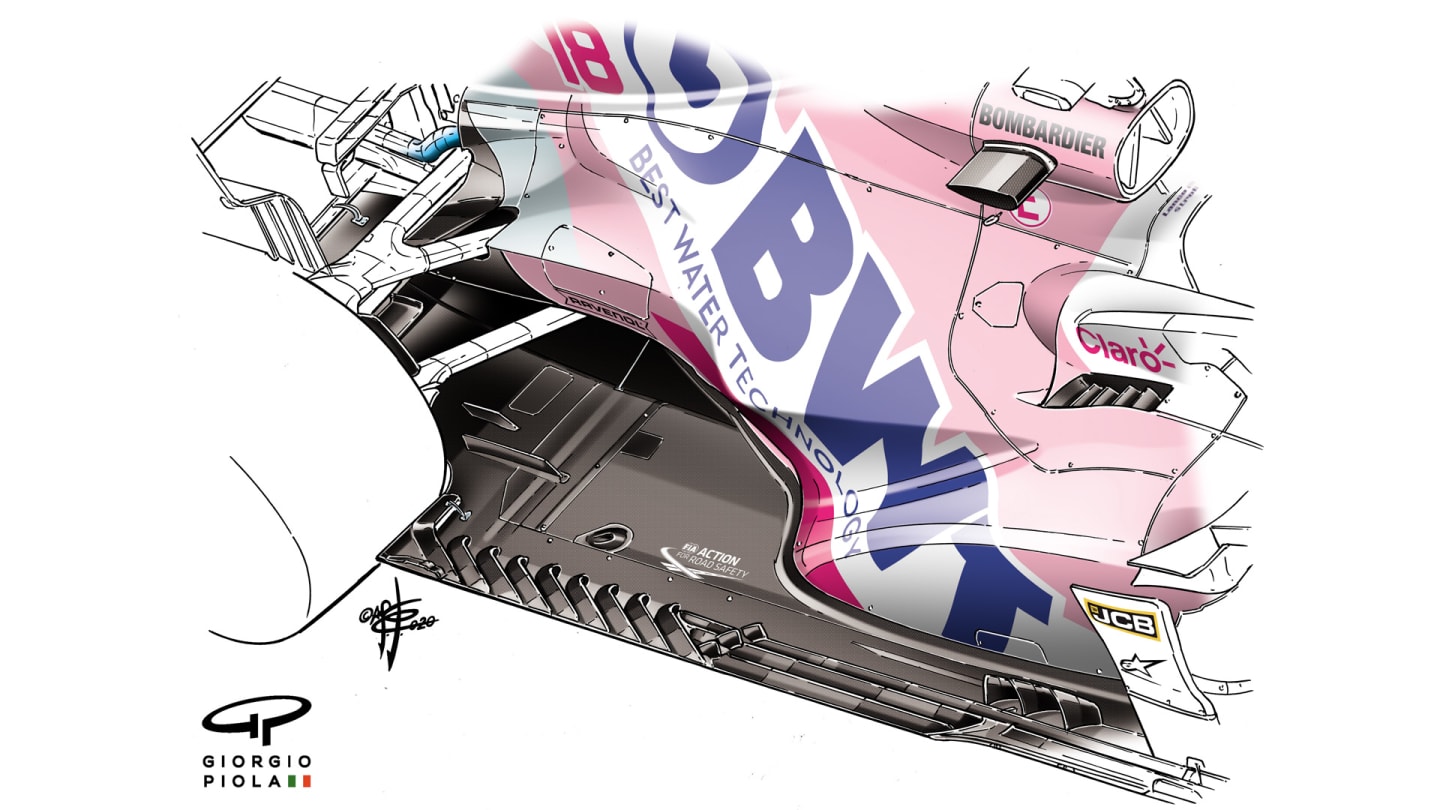
The new configuration of sidepod used by Lance Stroll at Mugello
Visually, the later pods look likely to create more drag than the old ones, but if they create a greater than proportional increase in downforce, the drag penalty will be accepted.
Besides, if the latest design allows the airflow coming down the bodysides (and exiting at the rear between the tyre’s inner face and the diffuser wall) to pull harder on the airflow exiting the underfloor, the increase in underfloor downforce might allow a smaller section rear wing to be used. In which case the net drag effect might even be favourable.
The teams must retain the existing tubs next year and can only develop the bodywork around it. The tubs of the W10 and W11 Mercedes are quite different and so Racing Point won't be able to model next year’s car as closely on the W11 as they did this one on the W10. But that doesn’t prevent them taking inspiration from the features on the bigger team’s cars.
YOU MIGHT ALSO LIKE
News Drugovich to remain as Aston Martin Test and Reserve Driver in 2025
Video LIVESTREAM: Watch all the action from Round 4 of the 2025 F1 Sim Racing World Championship
FeatureF1 Unlocked ‘Ferrari is completely different, but the target is the same’ – Vasseur on how Hamilton will handle his Maranello move
Feature TIMELINE: From a ‘GP2 engine’ to World Champions – recounting McLaren’s scarcely believable F1 turnaround
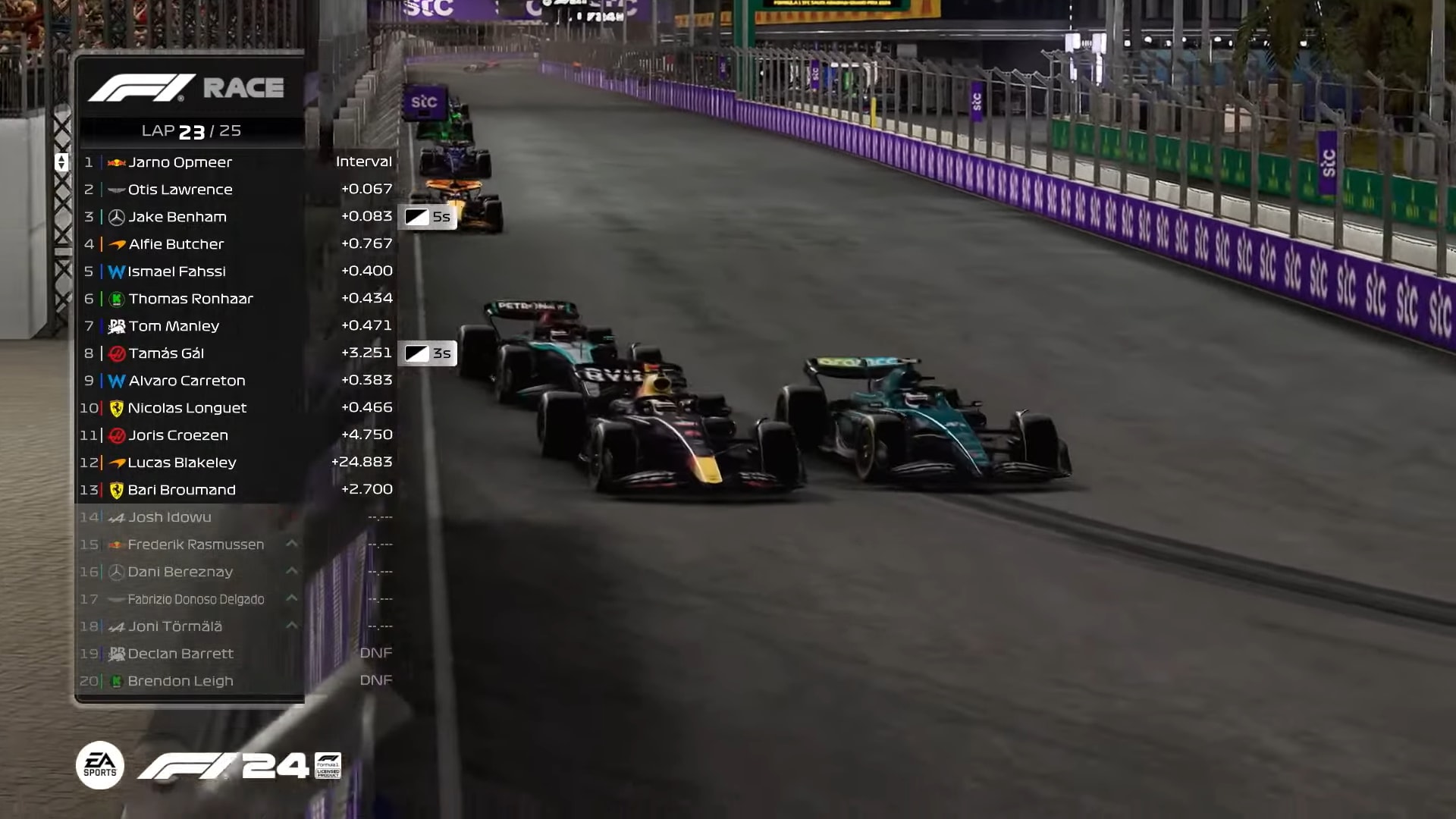


)
